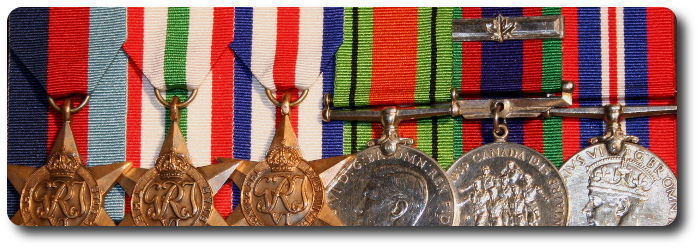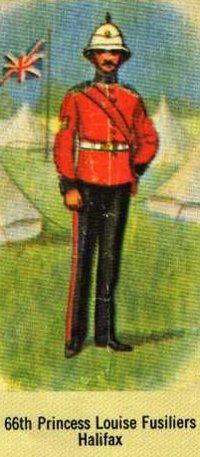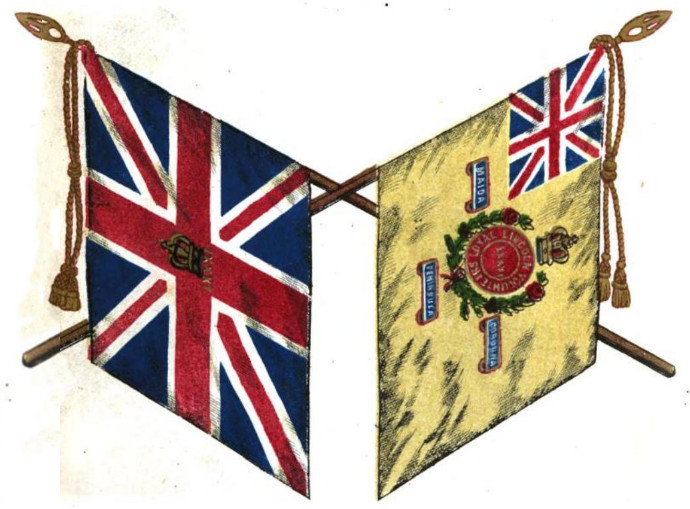Origin of the Victoria Cross
Topic: Medals

Origin of the Victoria Cross
The Age, Melbourne, Australia, 15 September 1928
By: R.K.P.
 "For Valour" is the simple inscription for this most prized of all decorations, the Victoria Cross. Fashioned from a piece of bronze weighing but 434 grains, with an intrinsic value of tenpence, it stands as a means of rewarding individual officers and men of the army, navy and air force who might perform some signal act of Valour or devotion to their country in the presence of the enemy. Civilians of both sexes are eligible for its award under certain conditions. Generally the deed which won it is a condensed bald statement reading like a definition in a dictionary. These are always notified in the London "Gazette.' There are, however, many other incidents connected with its history that are not generally known.
"For Valour" is the simple inscription for this most prized of all decorations, the Victoria Cross. Fashioned from a piece of bronze weighing but 434 grains, with an intrinsic value of tenpence, it stands as a means of rewarding individual officers and men of the army, navy and air force who might perform some signal act of Valour or devotion to their country in the presence of the enemy. Civilians of both sexes are eligible for its award under certain conditions. Generally the deed which won it is a condensed bald statement reading like a definition in a dictionary. These are always notified in the London "Gazette.' There are, however, many other incidents connected with its history that are not generally known.
"Noble fellows—I own I feel as if they were my own children; my heart beats for them as for my nearest and dearest. One must revere and love such soldiers as these," were the words uttered by Queen Victoria to her uncle, the King of the Belgians, one afternoon in May, 1855, when a number of naval and military Crimean veterans paraded before her to receive the medal bearing clasps for Alma, Inkerman and Balaclava. From that day we learn the Queen began to make plans for the decoration which we now know as the Victoria Cross. The idea of the award was hers, the method of granting it was hers, and the design, which is bold and fitting, we owe to her husband, the Prince Consort.
It is no easy task to evolve a token, worth an insignificant sum, which men prize so highly. This was what she was able to do, and with practically no official assistance. The smallest details were watched over by her. In the first place, for instance, it was suggested that the inscription should be "For the Brave." "No," replied the Queen, "this would lead to the inference that only those are deemed brave who have the Victoria Cross." She preferred "For Valour," and a more fitting inscription could not be found. On 5th February, 1856, the first official intimation dealing with the decoration was issued by the War Office. This was the first royal warrant that brought the cross into being.
The cross is cast in bronze, and on leaving the mould has the appearance of a golden piece. It is then placed in the hands of a highly-skilled workman, who spends many hours chasing the surface. When the detail has been properly set in relief, the piece is coated with a dark lacquer. The earliest crosses were cast in metal obtained from bronze guns taken from the Russians in the Crimea. A particular gun captured at Sebastopol has been used for the purpose, but Chinese guns have supplied the material for the crosses issued during the Great War of 1914-18. The cross when finished is one and half inches overall.
The first distribution of the cross took place on the morning of 26th June, 1857, in Hyde Park, London. The ceremony took less than an hour to perform. At 10 o'clock a Royal Salute was fired, and the Queen, on horseback, rode to the spot selected for the presentation, accompanied by the Prince Consort, the Prince of Wales (afterwards King Edward VII), and other distinguished personages. The Secretary of War held in his hand a list of the heroes—sixty-two in all—and, as he read out the names, one by one, the recipients stepped forward, and the Queen pinned the cross to their breasts.
Although the Cross was not instituted until February, 1856, the Queen decided that the award should be distributed as though it had come into being with the commencement of Russian hostilities. The first award was for an act on 21st June, 1854.
The first naval V.C. hero and the first man to win the cross was Charles David Lucas, a mate on H.M.S. Hecla. During the Crimean War a British Squadron was cruising in the Baltic Sea, and on 21st June, 1854, the Hecla and two other boats shelled the main fort of Bomarsund, but did little damage, as their ammunition was limited, and the buildings were proof against the explosives used in those days. During the engagement the Russian dropped a live shell on the Hecla. It was on the point of exploding, and had it done so the consequences would have been disastrous. Without a moment's hesitation Lucas rushes forward to where it lay, picked it up with his arms, and flung it overboard. His courageous act saved many of his comrades' lives. He was promoted to the rank of lieutenant, and rose to the rank of rear-admiral, serving his country in later wars.
It is hard to define the first military V.C. holder, as six gallant men performed heroic deeds on the day of the storming of Alma, and no army crosses had been distributed prior to then. Perhaps the senior of the bunch, and the first to receive the cross on his breast by the Queen, was one Robert James Lindsay, who afterwards became Lord Wantage.
The first V.C. hero of the air was Lieutenant W.B. Rhodes-Moorhouse, of the Royal Flying Corps. On 20th April, 1915, he flew to an important junction of Courtrai, and dropped bombs on the railway line near that station. Having accomplished his work, he started on the return journey, but was mortally wounded. Although he must have suffered considerably, he succeeded in flying thirty-five miles to his destination, and there made a report of his operations. The plucky way in which he stuck to his machine and brought it safely back to the British lines evoked the highest admiration, but unfortunately he did not live to receive the cross in person.
Until 1902 there was a rules that no cross was to be forwarded to the relatives of a V.C. hero if the person died during the performance of the gallant deed. At a later date King Edward VII cancelled this, and ruled that in future cases the relatives of a dead hero were to be given the decoration, and that in every case where the cross had been withheld for this reason since the inception in 1856, the relatives could come forward and claim it, when it may be publically presented to the next of kin. The Victoria Cross is, if possible, always presented by the King in person.
Bars are added to the cross for additional acts of bravery. According to the official list of V.C. winners, only one so far has been awarded, the recipient being Arthur Martin-Leake, who gained his decoration during the South African War, where he acted as surgeon-captain to the South African Constabulary. He received the bar at Zonnebeke between 20th October and 8th November, 1914, when he rescued while exposed to constant fire a large number of wounded lying close to the enemy trenches.
Although the award is given for Valour in the presence of the enemy, one case is on record when, in 1858, during the Fenian raid in Canada (sic), Private Timothy O'Hea, of the Rifle Brigade, was awarded the cross for his courageous behaviour in helping to extinguish a fire in an ammunition railway car, the exploit not being in the presence of the enemy.
Many alterations have been made to the original warrant instituting the cross. Civilians are eligible for its award, although during the Indian Mutiny several Government officials received it. The blue ribbon for a naval V.C. is now discontinued, and all recipients, whether army, navy or air services, wear the cross suspended by a crimson ribbon. When the ribbon alone is worn a miniature bronze cross is placed on it, with an additional bronze cross for each bar.
An annuity of £10 is awarded with the cross, and this may be increased to £50 when age or infirmity have impoverished the recipient.
In all 67 crosses have been conferred on Australian soldiers for two campaigns. In the South African war, 1899-1902, five were awarded and 62 for the Great War, 1914-18. A number of these sacrificed their lives for it, and it may be said of them who did not survive to receive it that they died on the field of glory to live forever in the field of fame.

Posted by regimentalrogue
at 12:01 AM EDT
Updated: Thursday, 15 September 2016 12:04 AM EDT










 Col Hughes' Vagaries
Col Hughes' Vagaries

 "For Valour" is the simple inscription for this most prized of all decorations, the Victoria Cross. Fashioned from a piece of bronze weighing but 434 grains, with an intrinsic value of tenpence, it stands as a means of rewarding individual officers and men of the army, navy and air force who might perform some signal act of Valour or devotion to their country in the presence of the enemy. Civilians of both sexes are eligible for its award under certain conditions. Generally the deed which won it is a condensed bald statement reading like a definition in a dictionary. These are always notified in the London "Gazette.' There are, however, many other incidents connected with its history that are not generally known.
"For Valour" is the simple inscription for this most prized of all decorations, the Victoria Cross. Fashioned from a piece of bronze weighing but 434 grains, with an intrinsic value of tenpence, it stands as a means of rewarding individual officers and men of the army, navy and air force who might perform some signal act of Valour or devotion to their country in the presence of the enemy. Civilians of both sexes are eligible for its award under certain conditions. Generally the deed which won it is a condensed bald statement reading like a definition in a dictionary. These are always notified in the London "Gazette.' There are, however, many other incidents connected with its history that are not generally known.
 At reveille every man will rise, wash and dress himself, and answer to the roll call. After roll call the windows are to be opened, the beds neatly rolled up, bedding folded, and berth swept out.
At reveille every man will rise, wash and dress himself, and answer to the roll call. After roll call the windows are to be opened, the beds neatly rolled up, bedding folded, and berth swept out. 
 Ottawa, Sept. 13.—Ever since the publication of regulations respecting the presentation of the South African Medals, there has been dissatisfaction among the Ottawa men, who are entitled to this recognition. Many of the men are not now members of the militia, but a considerable number are still enrolled in the Ottawa regiments. A meeting was held last evening, at which both classes were represented, about 40 being present. It was then decided to disregard the regulations and parade to receive medals wearing khaki uniform. Their decision soon reached the ear of the military authorities, as a result which the following order was promulgated today:
Ottawa, Sept. 13.—Ever since the publication of regulations respecting the presentation of the South African Medals, there has been dissatisfaction among the Ottawa men, who are entitled to this recognition. Many of the men are not now members of the militia, but a considerable number are still enrolled in the Ottawa regiments. A meeting was held last evening, at which both classes were represented, about 40 being present. It was then decided to disregard the regulations and parade to receive medals wearing khaki uniform. Their decision soon reached the ear of the military authorities, as a result which the following order was promulgated today:







 After the ceremony has been performed and the couple start to leave, the ushers draw their sabers—or swords for navy—at the command "Draw Sabers" (from one of the ushers) at the foot of the chancel steps and the bride and bridegroom pass beneath the arch. After they have passed through the ushers each take a bridesmaid down the aisle and out of the church. In marching out of the church, the bridegroom, best man and ushers offer their right arms to the bride, maid-of-honor and bridesmaids, thus avoiding entanglement of sabres or swords and dresses, and leaving the left hand free to carry the cap.
After the ceremony has been performed and the couple start to leave, the ushers draw their sabers—or swords for navy—at the command "Draw Sabers" (from one of the ushers) at the foot of the chancel steps and the bride and bridegroom pass beneath the arch. After they have passed through the ushers each take a bridesmaid down the aisle and out of the church. In marching out of the church, the bridegroom, best man and ushers offer their right arms to the bride, maid-of-honor and bridesmaids, thus avoiding entanglement of sabres or swords and dresses, and leaving the left hand free to carry the cap. The Canadian Regiments of Infantry and Rifles as classified as being either City or Rural.
The Canadian Regiments of Infantry and Rifles as classified as being either City or Rural.



 To-night General Gascoigne inspected the
To-night General Gascoigne inspected the 
 The Montreal Gazette, 18 June 1931
The Montreal Gazette, 18 June 1931
